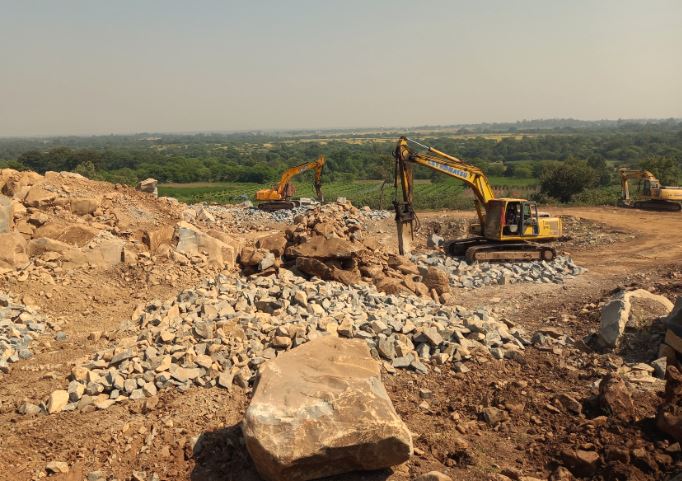Keonjhar: With illegal mining and smuggling of minor minerals running rampant, demand for use of differential global positioning survey (DGPS) of minor mineral quarries has gained momentum in Keonjhar district, a report said Saturday.
The state government has framed new rules for proper management of minor mineral quarries. This has become a cause of concern for people involved in illegal mining of stones and sand. Under this new rule, the state government has handed over the management of minor minerals from the Revenue Department to the Mining Department. The Mining department will look into every aspect of minor minerals’ mining starting from grant of lease to its management.
The new rule is now being implemented in three districts. People here have demanded DGPS survey of the mines as large-scale irregularities and norm violations have been reported from various quarries.
In the first phase, the DGPS survey was carried out in Bolangir, Kalahandi and Kandhamal districts by Odisha Space Application Centre (ORSAC) in the presence of mining and revenue officials.
The status report of the survey will be handed over by the Mining department to the district-level committee formed under the chairmanship of the Collectors. The SP, DFO, Sub-Collectors of all subdivisions, joint directors of geology department and mining officers are members of the committee while Deputy Director, Mines is its convener.
The map records of the survey will be jointly signed by the tehsildars and ORSAC before being handed over to notified mining officer or assistant mining officer.
The district-level committee will be informed of any kind of irregularity in mining which has been done in violation of OMMC (Odisha Minor Minerals Concession) Rules, 2016 if found during joint verification.
It is alleged that illegal extraction and smuggling of minor minerals have been prevalent in violation of the mining plan in Keonjhar district for years.
At many places, the miners have carried out extraction beyond their lease areas. There are hundreds of stone and sand quarries in the district but only 65 of them are functional. The Revenue Department has no clue about the exact quantity of murram, soil, sand and stone extracted during mining as it is yet to carry out mapping and measurement of the quarries.
While the rule mandates digging up to 6 metre down the surface level, most miners are digging up 10 metre below the ground for minerals. This has posed threat to wild animals and livestock. Miners are also mining beyond their sanctioned limits outside the demarcated areas of their mines. They are neither planting trees within the protective zones as required for environment protection, nor sparing the protective zones from excavating minerals.
Environmentalists said that the DGPS survey if conducted before handing over the minor mineral quarries to the Mining department will expose illegal mining that has been going on unabated for years.
Advocate Suraj Mohapatra said that the rule when implemented will be able to put a curb on illegal mining and mining beyond the sanctioned areas. This will help reduce smuggling and increase revenue for the state government. Moreover, this will also help in protection of the environment, he added.
Social activist Akshaya Pattnaik said the new rule will certainly help in curbing illegal mining and earning more revenue to the state government.
PNN
